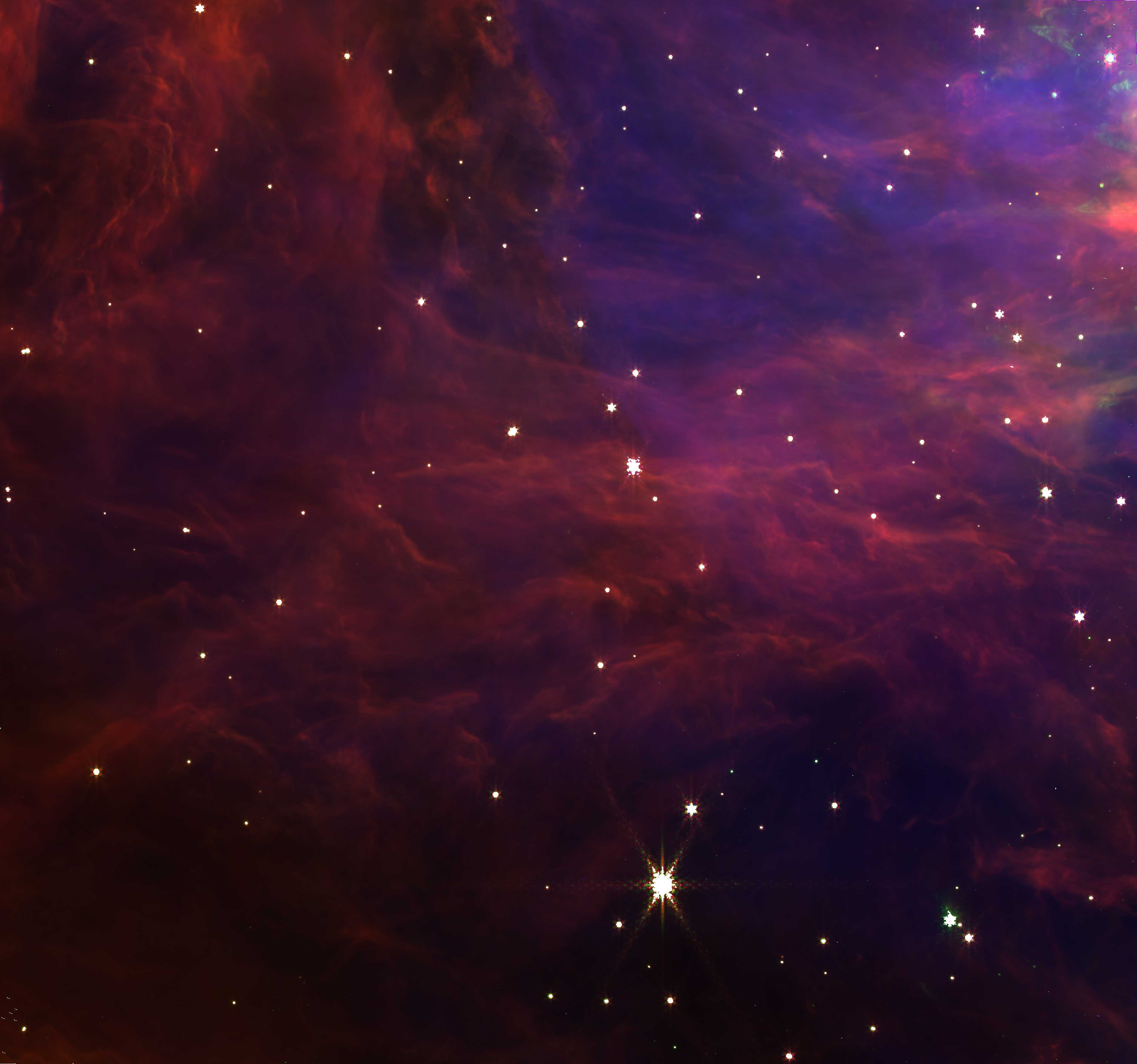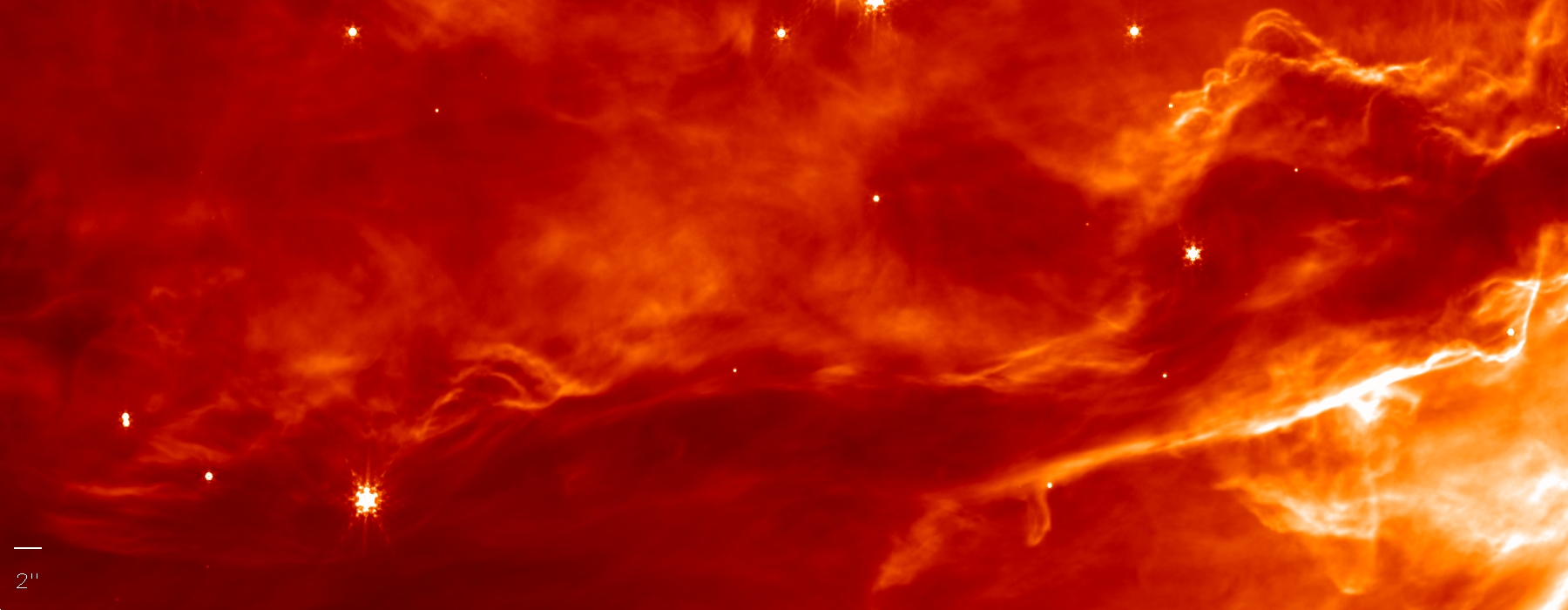 Astronomers, including researchers from UK ATC, have released six new papers in Astronomy & Astrophysics detailing new insights into the Orion Nebula.
Astronomers, including researchers from UK ATC, have released six new papers in Astronomy & Astrophysics detailing new insights into the Orion Nebula.
With a mass 2,000 times greater than our Sun, the Orion Nebula is the closest massive star-forming region and is therefore one of the most studied and photographed objects in the night sky.
The international team used MIRI and NIRCam on the James Webb Space Telescope to capture a series of stunning images and spectroscopic data. Providing detailed information on the Orion Bar region, focusing on the processes that are relevant for star- and planet-formation.
Professor Els Peeters, from Western University, Ontario and co-lead on the international PDRs4All consortium, said: “The data is incredible and will serve as benchmarks for astrophysics research for decades to come. So far, we have explored only a tiny fraction of the data, and this already resulted in several surprising and major discoveries."
Pamela Klaassen, astronomer at the UK ATC and co-author on some of the papers, said: “JWST allows us to study the Orion Nebula in unprecedented detail. Not only providing us with amazing images but also revealing new information on the physical and chemical composition of this region of space, increasing our understanding of how our galaxy evolves."
Find out more.

